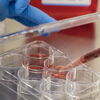
Processing Your Payment
Please do not leave this page until complete. This can take a few moments.
- News
-
Editions
-
- Lists
-
Viewpoints
-
Our Events
-
Event Info
- Women's Leadership Forum 2025
- On the Road with Mainebiz in Bethel
- Health Care Forum 2025
- On The Road with Mainebiz in Greenville
- On The Road with Mainebiz in Waterville
- Small Business Forum 2025
- Outstanding Women in Business Reception 2025
- On The Road with Mainebiz in Bath
- 60 Ideas in 60 Minutes Portland 2025
- 40 Under 40 Awards Reception 2025
- On The Road with Mainebiz in Lewiston / Auburn
- 60 Ideas in 60 Minutes Bangor 2025
Award Honorees
- 2025 Business Leaders of the Year
- 2024 Women to Watch Honorees
- 2024 Business Leaders of the Year
- 2023 NextUp: 40 Under 40 Honorees
- 2023 Women to Watch Honorees
- 2023 Business Leaders of the Year
- 2022 NextUp: 40 Under 40 Honorees
- 2022 Women to Watch Honorees
- 2022 Business Leaders of the Year
-
-
Calendar
-
Biz Marketplace
- News
-
Editions
View Digital Editions
Biweekly Issues
- April 21, 2025 Edition
- April 7, 2025
- March 24, 2025
- March 10, 2025
- Feb. 24, 2025
- Feb. 10, 2025
- + More
Special Editions
- Lists
- Viewpoints
-
Our Events
Event Info
- View all Events
- Women's Leadership Forum 2025
- On the Road with Mainebiz in Bethel
- Health Care Forum 2025
- On The Road with Mainebiz in Greenville
- On The Road with Mainebiz in Waterville
- + More
Award Honorees
- 2025 Business Leaders of the Year
- 2024 Women to Watch Honorees
- 2024 Business Leaders of the Year
- 2023 NextUp: 40 Under 40 Honorees
- 2023 Women to Watch Honorees
- 2023 Business Leaders of the Year
- + More
- 2022 NextUp: 40 Under 40 Honorees
- 2022 Women to Watch Honorees
- 2022 Business Leaders of the Year
- Nomination Forms
- Calendar
- Biz Marketplace
Maine scallop farmers offer ‘unique’ benefit, poised for growth
 Courtesy / NOAA Fisheries
A Penobscot Bay scallop farmer lowers sea scallops into the water.
Courtesy / NOAA Fisheries
A Penobscot Bay scallop farmer lowers sea scallops into the water.
The sea scallop aquaculture community is unique to Maine and poised for growth, says the National Oceanic and Atmospheric Administration, which this week published a video advertising the industry.
According to the federal agency, the industry offers new opportunities on the economic front and builds resilient communities.
Maine’s scallop farming industry is a mix of small, individual businesses but has the potential to be a larger contributor to Maine’s economy, according to a 2021 report published by the Gulf of Maine Research Institute, the University of Maine and Coastal Enterprises Inc.
In 2021, there were seven to nine active sea scallop farmers in Maine. By comparison, Japan, which began scallop farming in the 1930s to help re-seed and bolster its wild scallop fishery, had about 1,900 scallop farms in 2021, which represented 70% of Japan’s total scallop harvest. Interested parties involved in the Maine scallop growing effort have made several trips since 1999 to Japan’s Aomori region to bring equipment and culturing techniques to Maine.
Favorable ocean conditions supporting the wild scallop populations along Maine’s coast are also suitable for farming the species, according to the report, the authors of which formed a “scallop aquaculture initiative” to look at the state of Atlantic sea scallop aquaculture in Maine and hired Des FitzGerald, a Maine aquaculture industry veteran, to serve as the initiative’s project manager.
Maine’s sea scallop aquaculture industry has been steadily developing for about 20 years in the hands of a variety of people and organizations, including fishermen farmers, marine extension programs, community development financial institutions and research and outreach foundations.
Benefits of the industry, the agency says, include allowing fishermen to diversify their income streams, particularly as Maine’s wild fisheries have become increasingly focused on the lobster industry.

“We’re seeing fishermen in Maine begin to diversify their operations by incorporating aquaculture,” said Kevin Madley, aquaculture coordinator for the Greater Atlantic Region with NOAA’s National Marine Fisheries Service. “They are preparing themselves to be resilient to changes in their current fishing practices.”
Marsden Brewer, co-owner with his son Bob of PenBay Farmed Scallops in Penobscot Bay, said reduced fish stocks and an increase in commercial fishing regulations have led to a decrease in fishing opportunities.
“In the industry right now, we’re down to one fishery,” Brewer said. “What we want to do here is create an option.”
In a separate release, Hugh Cowperthwaite, a senior program director for fisheries and aquaculture with Brunswick-based Coastal Enterprises Inc., said the farmed scallop industry is not meant to compete with wild scallop harvesting volumes in New England, nor impact trends for demand and prices of wild harvested sea scallops.

“A farmed scallop is not meant to compete or displace wild fishery scallops. It’s simply a different product offering,” said Cowperthwaite.
According to NOAA, scallop farming has to potential to serve as a specialty market within the seafood industry, allowing consumers to buy scallops at different sizes and even to buy the whole shellfish instead of the more commonly available adductor muscle meats.
Part of the interest in farmed scallops relates to the traceability of the product from farm to market, the agency said.
An ongoing challenge for the product is a short shelf life and the need for strict and costly biotoxin testing, particularly in the rapidly changing ocean environment of the Gulf of Maine, the 2021 report said.
And co-location of aquaculture lease sites with other economic uses, particularly commercial fishing, marine traffic and conservation, “put negative pressure on selection and permitting of larger scale lease sites,” the report said.
Real estate development also puts pressure on working waterfront properties and access to the shore.














0 Comments